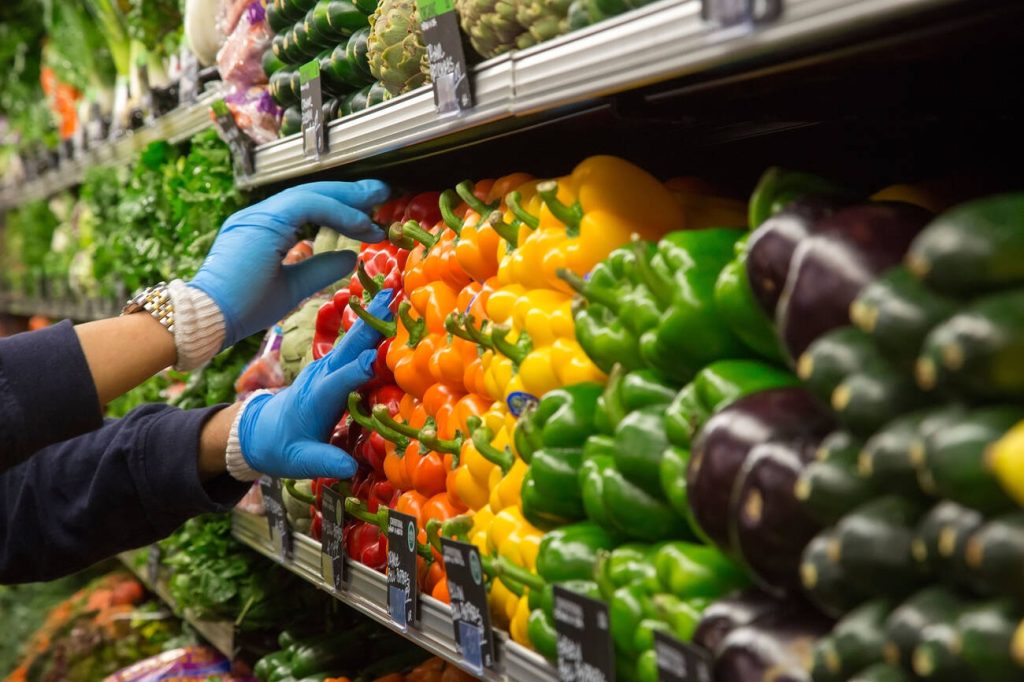Imagine you’re strolling through the aisles of Whole Foods, surrounded by vibrant produce and eco-friendly products. But have you ever wondered how Whole Foods can become even more sustainable? Well, get ready to dive into a world where reducing single-use plastics, tackling food waste, and implementing regenerative agriculture practices are just the beginning. In this article, we’ll explore the steps Whole Foods can take to make a bigger impact on our planet while still offering high-quality, sustainable choices for all. So grab your reusable shopping bag and let’s uncover the path to a greener future together.
Reduction of Single-Use Plastics
Whole Foods is continuously raising the bar by implementing sustainable alternatives to plastic packaging and encouraging customers to bring their own reusable bags. By reducing the use of single-use plastics, Whole Foods is taking a proactive approach towards environmental sustainability. They were the first U.S. grocer to ban plastic grocery bags at checkout in 2008 and later became the first to ban plastic straws in 2019. This commitment extends beyond just banning certain items, as they are constantly working on finding innovative solutions for sustainable packaging. By encouraging customers to bring their own reusable bags, Whole Foods is empowering individuals to make a positive impact on the environment and reduce waste. Together, we can make a difference in creating a more sustainable future.
Food Waste Reduction
Addressing food waste in your stores is crucial for reducing environmental impact and promoting responsible consumption. By implementing measures to convert waste into energy and striving to be zero waste, Whole Foods can lead the movement to reduce carbon footprints through waste management. It is important to push all stores to participate in waste reduction efforts, whether it’s by donating excess food or finding innovative ways to minimize food waste. By taking these steps, Whole Foods can set a positive example for the industry and inspire other businesses to follow suit. Together, we can make a significant difference in reducing food waste and creating a more sustainable future.
Sustainable Built Environment
To create a sustainable built environment, you can explore innovative ways to make your stores more energy efficient and incorporate green building practices to reduce environmental impact. Start by implementing energy-efficient lighting and HVAC systems to minimize electricity usage. Consider installing solar panels on the roofs of your stores to generate renewable energy and decrease reliance on fossil fuels. Additionally, use sustainable materials in store construction and design, such as recycled or reclaimed materials, to reduce waste and promote resource conservation. Implementing water-saving fixtures and systems can also contribute to a more sustainable built environment. By prioritizing these practices, you can not only reduce your ecological footprint but also inspire others in the industry to follow suit for a greener future.
Regenerative Agriculture
By supporting regenerative practices, Whole Foods is helping farmers and ranchers promote soil health and biodiversity. Here are four ways in which Whole Foods is making a difference:
- Encouraging farmers to use sustainable farming methods that reduce chemical inputs. Picture fields without harmful pesticides or synthetic fertilizers, where crops grow naturally, nourished by nutrient-rich soil.
- Supporting the research and development of regenerative farming techniques. Imagine scientists working alongside farmers, discovering innovative ways to restore and enhance the natural ecosystem.
- Educating consumers about the benefits of regenerative agriculture. Visualize shoppers learning about how their food choices can contribute to healthier soils, increased biodiversity, and a more sustainable future.
- Investing in the preservation of soil health and biodiversity through partnerships with dedicated farmers and ranchers. Envision farms flourishing with diverse plant species and thriving ecosystems that support pollinators like bees and butterflies.
With these efforts, Whole Foods is not only providing customers with high-quality organic products but also playing a crucial role in building a more sustainable agricultural system for generations to come.
Pollinator Protection
Whole Foods’ commitment to pollinator protection is evident in their efforts to plant pollinator-friendly gardens and habitats near their stores. By creating these spaces, Whole Foods is providing a safe haven for honeybees and other pollinators to thrive. They understand the crucial role that these pollinators play in our food system and are actively taking steps to protect them.
In addition to planting gardens, Whole Foods also partners with organizations dedicated to promoting pollinator conservation. Through these partnerships, they are able to raise awareness about the importance of pollinators and educate customers on how they can help support their populations.
Supply Chain Sustainability and Standards
Whole Foods’ commitment to supply chain sustainability and standards is evident in their high standards for suppliers, ensuring that they work with partners who align with their values. To create imagery in your mind, imagine the following:
- Whole Foods carefully selects suppliers who prioritize organic farming practices, promoting soil health and biodiversity.
- They partner with farmers and ranchers dedicated to regenerative agriculture, reducing chemical inputs and supporting sustainable farming methods.
- Whole Foods works with suppliers who implement efficient inventory management systems, minimizing food waste and reducing environmental impact.
- They collaborate with organizations to protect and support pollinator populations, planting pollinator-friendly gardens near stores.
Packaging, Product Sourcing, and Sustainable Practices
Packaging choices and the sourcing of products play a crucial role in promoting environmentally friendly practices. As a conscious consumer, you can support Whole Foods’ sustainability efforts by opting for products with eco-friendly packaging. Look for items that use recycled materials or are packaged in biodegradable or compostable materials. By making these choices, you contribute to reducing waste and minimizing the environmental impact of packaging. Additionally, consider supporting products that prioritize sustainable sourcing practices. Whole Foods is committed to explicitly labeling GMO products and limiting the use of palm oil to certified sustainable sources. By choosing these products, you help encourage responsible production methods and protect vulnerable ecosystems. Together, we can make a positive difference for our planet through mindful packaging and product sourcing choices.
Alternative Energy Sources and Emissions Reduction
By choosing products that utilize alternative energy sources and reduce emissions, you can actively contribute to mitigating climate change and supporting a cleaner environment. Here are four ways in which Whole Foods is making progress in this area:
- Installing solar panels: Whole Foods has taken the initiative to install solar panels in about 25 stores, resulting in significant CO2 emissions reduction. Picture the sun’s rays hitting these panels, converting sunlight into clean energy.
- Utilizing wind energy: Whole Foods uses wind energy as an alternative power source, avoiding carbon dioxide pollution equivalent to not consuming 1,200,000 barrels of oil. Imagine wind turbines spinning gracefully against a clear blue sky.
- Electric vehicle charging stations: To promote the use of electric vehicles, Whole Foods has created charging stations at various stores and is working on additional installations. Envision rows of electric cars being charged with renewable energy.
- Energy-efficient lighting and HVAC systems: Whole Foods incorporates energy-efficient lighting and HVAC systems into their stores to further reduce environmental impact. Imagine bright LED lights illuminating aisles while keeping energy consumption low.
Climate Change Impact and Sustainability Efforts
Addressing the impact of climate change and promoting sustainability requires collective efforts from various stakeholders. As a consumer, you play a crucial role in supporting Whole Foods’ sustainability efforts. By shopping at Whole Foods, you are supporting a company that is committed to mitigating the effects of climate change through their sustainable practices. From reducing single-use plastics and food waste to investing in regenerative agriculture and pollinator protection, Whole Foods is taking steps to make a positive impact on the environment. Their commitment to alternative energy sources and emissions reduction further demonstrates their dedication to sustainability. By educating yourself about sustainable food choices and supporting local, organic, and non-GMO options, you can contribute to Whole Foods’ mission of creating a more sustainable future for all.
| Sustainable Effort | Impact | Benefits |
|---|---|---|
| Reduction of Single-Use Plastics | Reduces plastic pollution | Protects marine life |
| Food Waste Reduction | Minimizes waste | Helps feed communities in need |
| Sustainable Built Environment | Lowers energy consumption | Reduces carbon footprint |
| Regenerative Agriculture | Improves soil health | Preserves biodiversity |
| Pollinator Protection | Supports ecosystem resilience | Ensures crop pollination |
Table: Examples of Whole Foods’ Sustainability Efforts

